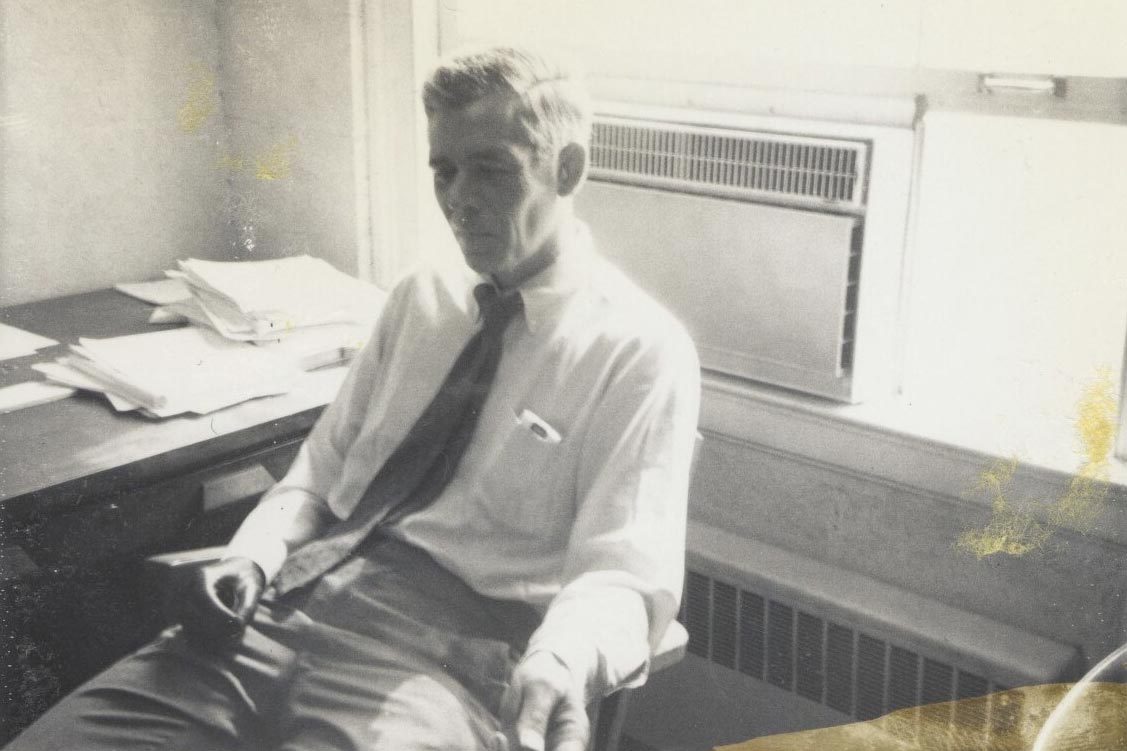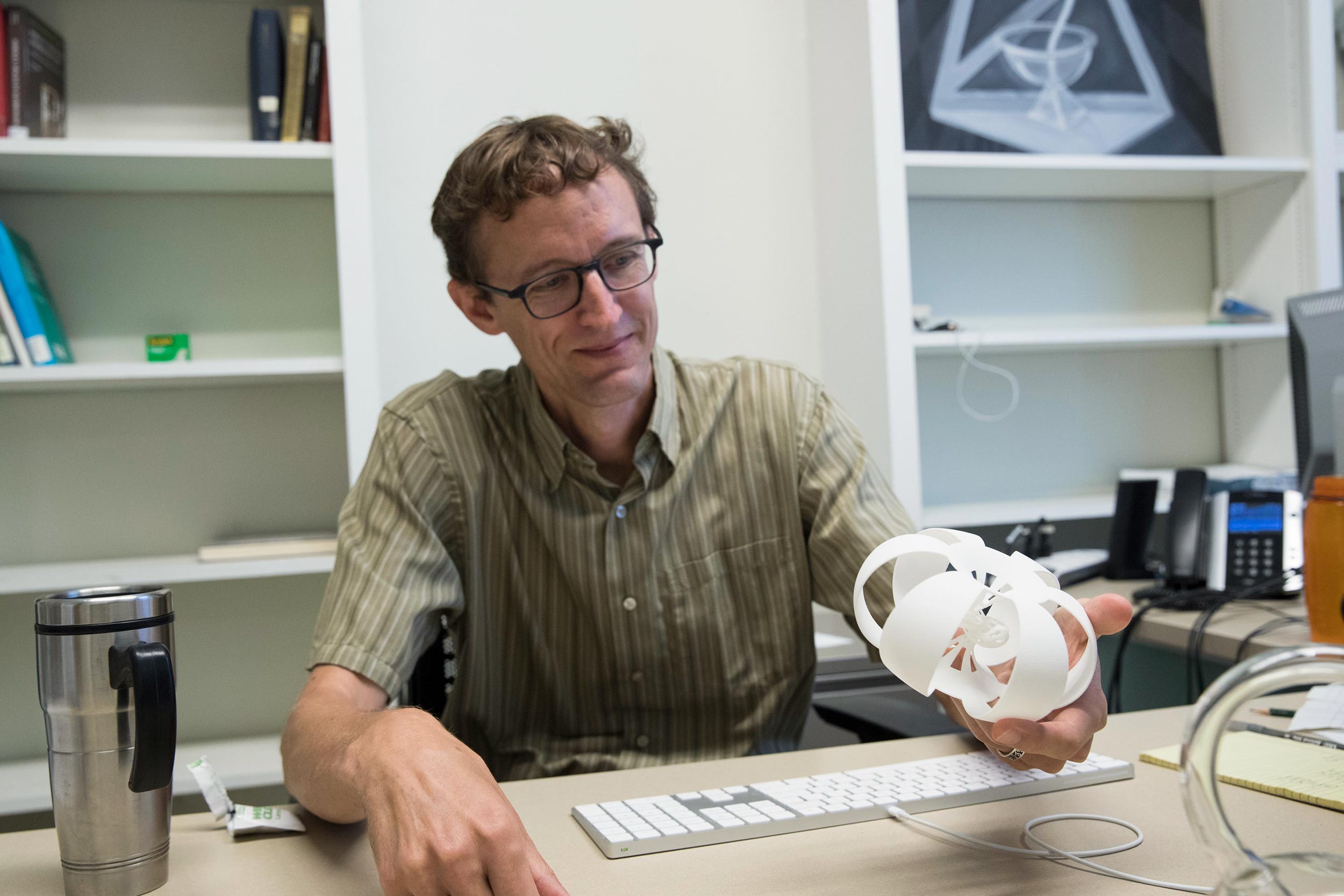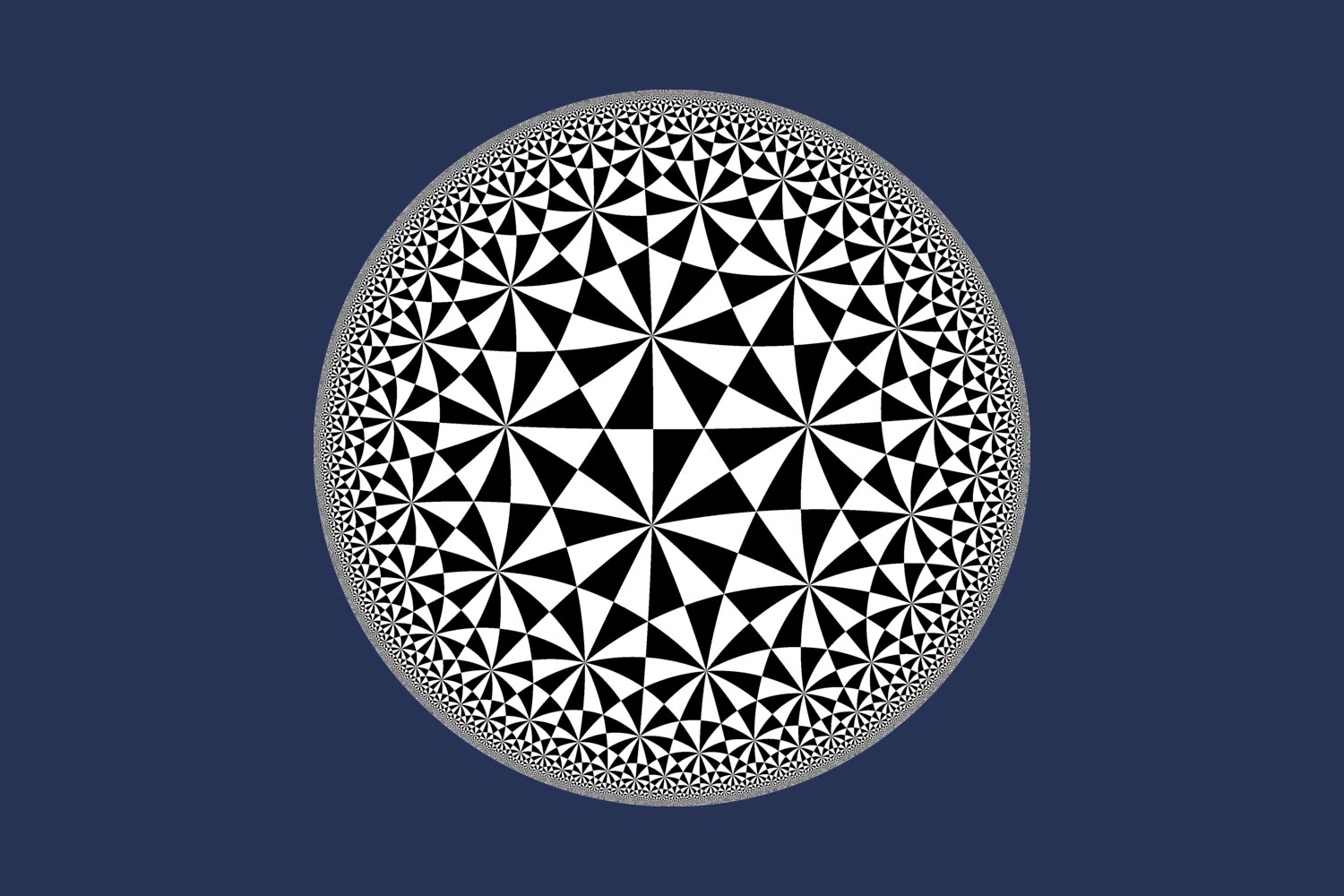We live in a structured universe full of shapes, curves, angles, flows. Particles organize into atoms, atoms into molecules, molecules into compounds that become the fabric for everything, including our planet with its varied terrains – made up of shapes, curves, angles and flows. This multidimensional and dynamic compositional activity can be understood and expressed mathematically.
Among many disciplines within mathematics that work to explain the underlying structures of the universe and our own planet, theoretically and practically, are geometry and topology. The University of Virginia has a lengthy and strong history in these subjects; Edwin Floyd, a UVA provost and dean of the College of Arts & Sciences during the 1970s and ’80s, was a leading thinker in the field, and held a UVA Ph.D. in mathematics.

Former provost and dean Edwin Floyd, who earned his Ph.D. in mathematics at UVA, was a leading thinker in the field of topology. (Photo courtesy UVA Visual History Collection)
Now, the geometry and topology group in the Department of Mathematics – comprising six faculty members at early, middle and advanced stages of their careers – has won a $2.5 million Research Training Group grant from the National Science Foundation. The grant is designed to enhance the training of undergraduate and graduate students, postdoctoral associates and faculty members in geometry and topology research.
NSF’s goal for the program is to strengthen the United States’ scientific competitiveness by increasing the number of people pursuing careers in mathematics and math-related sciences. The agency provides about five of these highly competitive group training grants per year.
Researchers in geometry and topology seek to understand the “shape of objects,” such as curves, surfaces and their higher-dimensional analogs called “manifolds,” knowledge of which can also be applied to the engineering of objects and for many scientific endeavors.
“For example, one can use algebraic topology to conduct data analysis on a range of data sets to find patterns and structures within the data,” said Thomas Mark, a mathematics professor who co-wrote the grant proposal. “The techniques we use and develop can be applied to theoretical physics, such as quantum field theory, string theory or condensed matter physics, and to economics and other complex high-dimensional areas where patterns can be hidden in masses of seemingly unrelated information. We think about how geometric ideas can be used to describe these structures, and we find ways to extract information from the geometry.”

Mathematics professor Thomas Mark, holding a 3-D-printed representation of a multi-dimensional shape, co-wrote the proposal that won the NSF grant. (Photo by Dan Addison, University Communications)
Mark said the training grant will fund a “broad slice” of learning and research activity in the math department. Math professors Julia Bergner, Thomas Koberda, Slava Krushkal, Nick Kuhn and Sara Maloni, with Mark, teamed to write the proposal that won the group grant.
The grant will fund six three-year postdoctoral positions, roughly doubling the current number of such researchers in the math department. These associates will participate in a regional collaborative research initiative while working closely with UVA topology faculty, postdocs and graduate students. They also will mentor undergraduate students through summer research experiences.
The grant also supports graduate student traineeships, allowing additional time for research and participation in seminar courses.
“The grant will be great for graduate students working in topology and geometry,” Ross Akhmechet, a mathematics Ph.D. candidate, said. “Part of my summer support comes from this grant. It will also be used to support an extra semester without teaching duties, which I plan to take in this upcoming fall semester. This is a huge benefit to graduate students, because it allows more time to focus on research.”
Additionally, the training grant provides for pre-graduate summer training, mentoring and new research opportunities for graduate students, and travel funds for conferences and collaborations with other universities in the region.
For undergraduate students, the grant helps fund an existing summer program for undergraduate research, and a directed reading program that pairs graduate students with undergraduates for independent study. Mark said that many undergraduate math majors have a second, “applied” major, like physics, astronomy, molecular biology or engineering.
“With this grant, we’re building on our research collaborations with other departments at UVA and at other institutions regionally, and can organize conferences, seminars and public lectures demonstrating the value of mathematics in society,” Mark said. “This grant is a big enhancement to the possibilities for our strong research group.”
Media Contact
Article Information
July 31, 2019
/content/major-grant-helps-mathematicians-train-defining-shapes-and-patterns

